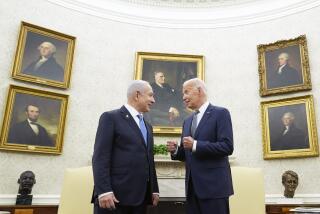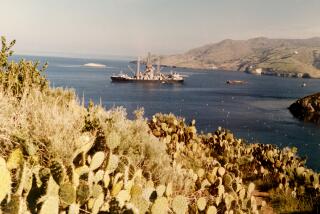U.S. Misjudged Cuba Buildup, Memos Say
- Share via
WASHINGTON — The U.S. government’s intelligence analysts were so sure in the summer of 1962 that the Soviet Union would not risk sending offensive nuclear weapons to Cuba they discounted growing evidence to the contrary, changing their views only after a lucky U-2 reconnaissance flight produced clear photographic proof, declassified CIA documents showed Monday.
At an extraordinary seminar, the CIA released 112 previously secret memos and reports and assembled many of the key players in the drama that brought the world to the brink of nuclear war 30 years ago this week.
“The record of National Intelligence Estimates was not very good during that period,” Chester Cooper, in 1962 an assistant to the CIA’s deputy director for intelligence, told an audience of several hundred on the CIA’s campus-like headquarters in suburban Langley, Va.
Although the broad outline of the Cuban missile crisis was known shortly after it ended peacefully Oct. 28, 1962, the seminar helped to fill in some of the historic detail, indicating clearly that the intelligence community missed the significance of a Soviet military build-up on the island until it was almost too late for President John F. Kennedy to respond.
On Sept. 19, a special National Intelligence Estimate--representing the consensus of views of the CIA, Defense Intelligence Agency and other intelligence organizations--concluded that the Soviet Union was unlikely to put medium- or intermediate-range ballistic missiles into Cuba because to do so “would indicate a far greater willingness to increase the level of risk in U.S.-Soviet relations than the U.S.S.R. has displayed thus far.”
Instead, the analysts said, the Soviets appeared to be building up Cuba’s defenses, especially by the installation of SAM-2 antiaircraft missiles.
The estimate drew the wrong conclusion, despite the objections of CIA Director John A. McCone, who warned repeatedly starting Aug. 10 that the Soviets appeared to be installing offensive missiles in Cuba to reduce an overwhelming U.S. advantage in strategic weaponry.
The missiles were eventually discovered Oct. 14 when a U-2 spy plane photographed a clearly visible missile site and a convoy of weapons on its way there. The missiles were not yet operational.
Adm. William O. Studeman, now deputy director of the CIA, said in a keynote speech to the seminar Monday that the crisis eventually ended peacefully because Kennedy “had time to consider and carefully weigh his political and military options” because of intelligence reports that demonstrated the missiles were not yet ready for use.
The Oct. 14 U-2 flight was the first one over the area of the missile activity in more than a month. Studeman said that the spy planes had been grounded at the insistence of Secretary of State Dean Rusk because the Soviets had installed the sort of antiaircraft missiles that downed a U-2 piloted by Francis Gary Powers over the Soviet Union in 1959.
In all, the Soviets shipped 40 missiles to Cuba. That number seems ridiculously small in comparison to the 10,000 warheads on each side that the United States and the Soviet Union eventually were to aim at each other. But it may have quadrupled the number of nuclear weapons with which Moscow could hit the United States at that time.
More to Read
Sign up for Essential California
The most important California stories and recommendations in your inbox every morning.
You may occasionally receive promotional content from the Los Angeles Times.













